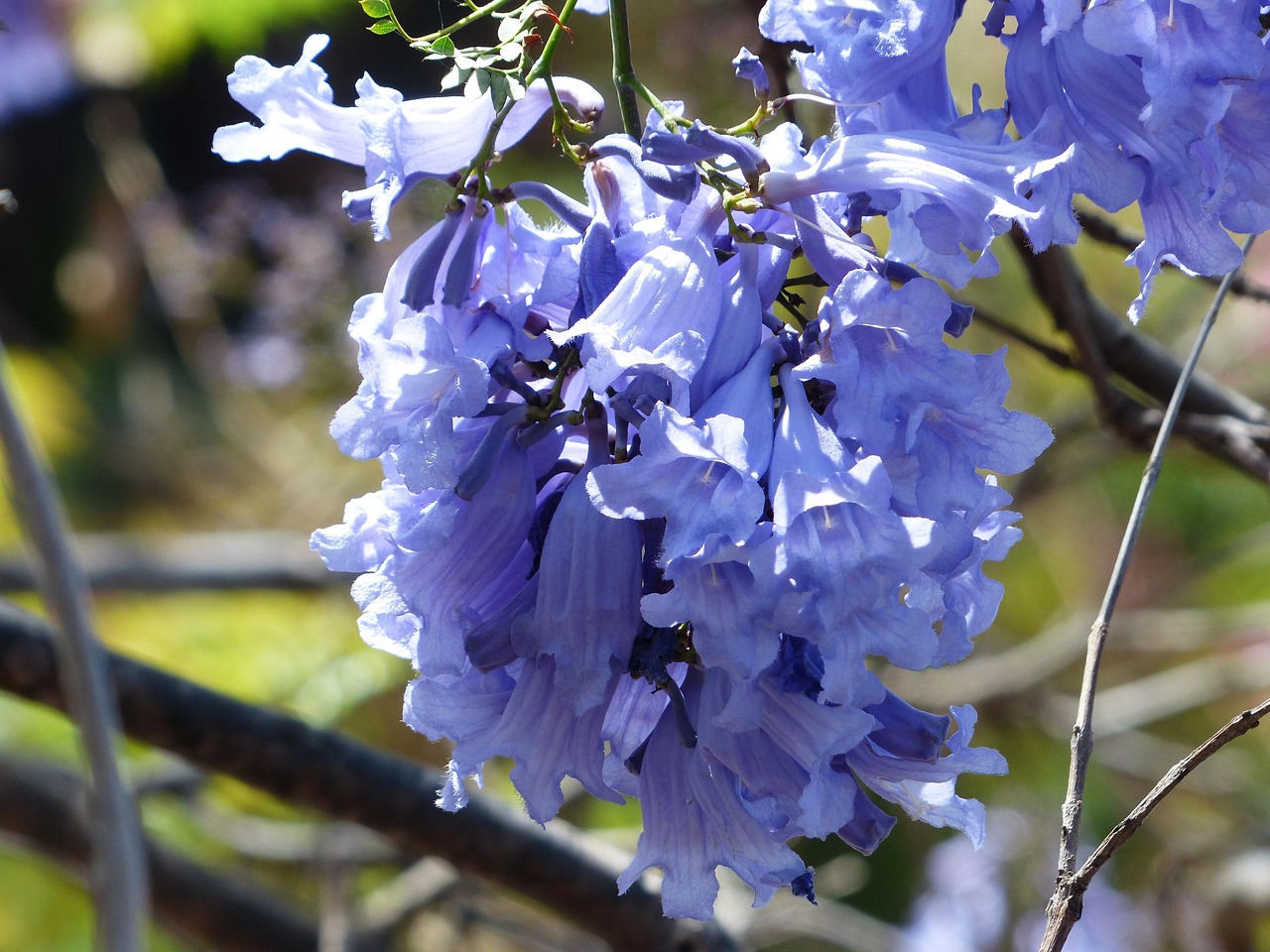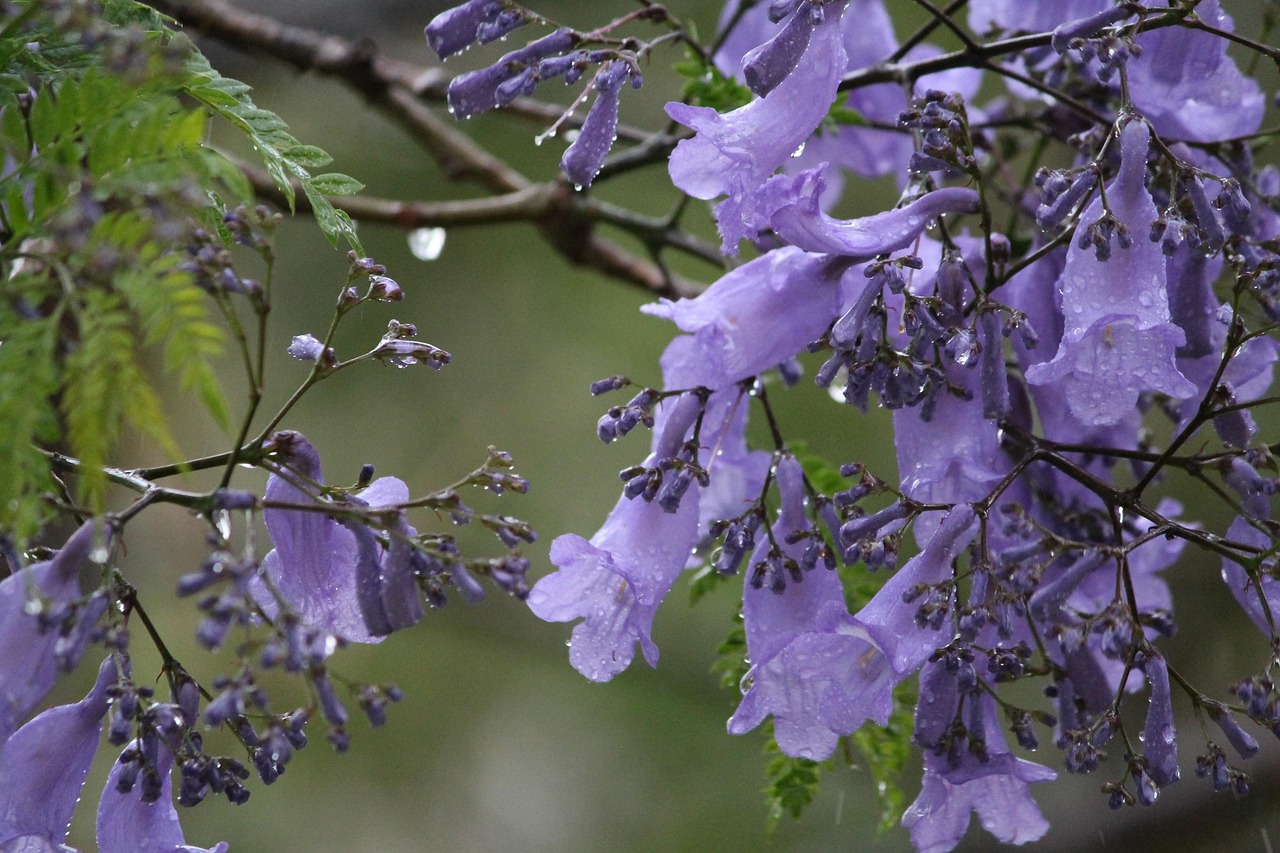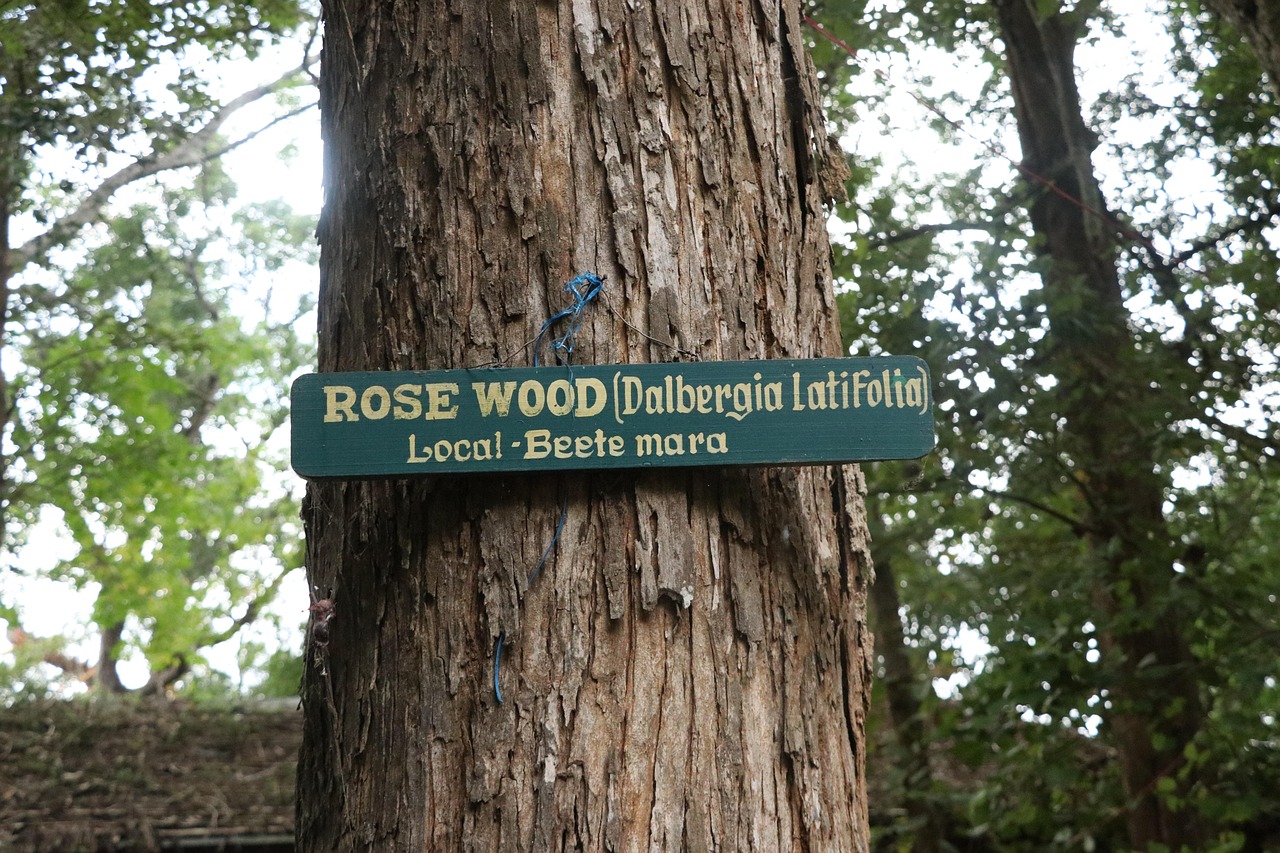Jacaranda trees are beautiful but can face several issues, such as pests, diseases, and environmental stress. Addressing these problems promptly can help maintain their health and beauty.
Understanding Jacaranda Trees
Jacaranda trees, known for their stunning purple flowers and fern-like leaves, are a favorite among gardeners and landscapers. Originating from South America, these trees thrive in warm climates and are commonly found in subtropical regions. Their vibrant blossoms create picturesque landscapes, especially during the blooming season in late spring to early summer.

However, despite their beauty, Jacaranda trees can encounter various problems that may affect their growth and overall health. Understanding these issues is crucial for any gardener or homeowner looking to cultivate these magnificent trees. Some common problems include pest infestations, diseases, environmental stress, and improper care.
Common Problems Faced by Jacaranda Trees
Jacaranda trees can suffer from a range of issues. Identifying these problems early can help in taking appropriate action. Below is a list of common issues:
- Pest Infestations
- Diseases
- Environmental Stress
- Improper Pruning
- Nutrient Deficiencies
Pest Infestations
Pests can be one of the most significant threats to Jacaranda trees. Common pests include aphids, spider mites, and scale insects. These pests feed on the tree’s sap, leading to weakened branches and reduced flowering. Early identification is key to managing pest issues effectively.

Signs of Pest Infestation
Look for the following signs of pest problems:
- Wilting leaves
- Sticky residue (honeydew) on leaves or ground
- Discoloration or curling of leaves
- Visible insects on the tree
Diseases
Jacaranda trees are susceptible to various diseases, including root rot and leaf spot. Root rot often occurs due to overwatering or poor drainage. Leaf spot is usually caused by fungal infections that thrive in humid conditions.
Common Diseases and Their Symptoms
| Disease | Symptoms |
|---|---|
| Root Rot | Yellowing leaves, wilting, stunted growth |
| Leaf Spot | Dark spots on leaves, leaf drop, reduced vigor |
Environmental Stress
Environmental factors can also impact the health of Jacaranda trees. They prefer well-draining soil and full sun but can suffer if exposed to extreme conditions such as drought or excessive moisture.

Factors Contributing to Environmental Stress
- Poor soil drainage
- Insufficient sunlight
- Inconsistent watering practices
- Extreme temperature fluctuations
Improper Pruning
Improper pruning techniques can lead to weakened branches and increased vulnerability to disease. It is essential to prune Jacaranda trees at the right time and in the correct manner to encourage healthy growth.
Best Practices for Pruning Jacaranda Trees
- Prune during the dormant season (late winter to early spring)
- Avoid heavy cutting; remove only dead or crossing branches
- Use clean, sharp tools to prevent infections
Nutrient Deficiencies
Nutrient deficiencies can affect the growth of Jacaranda trees. Essential nutrients include nitrogen, phosphorus, and potassium. A lack of these nutrients can lead to poor flowering and growth issues.
Maintaining healthy soil with proper fertilization can prevent nutrient deficiencies and promote lush foliage and vibrant blooms.

Pest Management for Jacaranda Trees
Effective pest management is crucial for maintaining the health of Jacaranda trees. Addressing pest issues quickly can prevent severe damage and ensure the longevity of your trees. There are various methods to manage pests, ranging from natural solutions to chemical treatments.
Natural Pest Control Methods
Many gardeners prefer natural pest control methods to minimize chemical use. These methods are often safer for the environment and beneficial insects. Here are some effective natural solutions:
- Neem Oil: This natural pesticide disrupts the life cycle of pests without harming beneficial insects.
- Insecticidal Soap: This soap suffocates soft-bodied insects like aphids and spider mites.
- Companion Planting: Planting certain flowers and herbs can repel harmful insects effectively.
Chemical Solutions
If natural methods do not work, chemical pesticides may be necessary. It is important to choose a product that targets specific pests while being safe for Jacaranda trees. Always read product labels carefully and follow application instructions.
Recommended Chemical Treatments
- Pyrethroid Insecticides: Effective against a wide range of pests but should be used sparingly to avoid harm to beneficial insects.
- Horticultural Oils: These oils can help control pests without leaving harmful residues.
Common Diseases and Their Treatments
Diseases can pose a significant threat to Jacaranda trees. Recognizing symptoms early and taking appropriate actions can mitigate damage. Below are common diseases that affect Jacaranda trees along with their treatments.
Root Rot
Root rot is often caused by overwatering or poorly draining soil. This disease can severely weaken or kill the tree if not addressed promptly.
Symptoms of Root Rot
- Yellowing leaves that drop prematurely
- Wilting despite adequate watering
- Soft, darkened roots when inspected
Treatment Options
The best way to treat root rot is to improve drainage. Consider the following steps:
- Adjust watering schedules to allow the soil to dry out between waterings.
- Ensure that the planting area has good drainage; consider raising beds if necessary.
- If the problem persists, you may need to replace the affected soil or replant the tree in a new location with better drainage.
Leaf Spot Disease
Leaf spot disease manifests as dark, round spots on leaves, often leading to leaf drop. This condition is typically caused by fungal infections.
Symptoms of Leaf Spot Disease
- Dark spots with yellow halos on leaves
- Premature leaf drop
- Reduced vigor and growth of the tree
Treatment Options
To combat leaf spot disease, consider the following treatments:
- Remove and dispose of infected leaves to prevent spreading.
- Apply fungicides as a preventive measure, especially during humid conditions.
- Ensure proper air circulation around the tree by pruning crowded branches.
Environmental Considerations for Jacaranda Trees
Caring for Jacaranda trees involves understanding their environmental needs. These trees thrive in specific conditions, and providing a suitable environment is essential for their health.
Soil Requirements
Jacaranda trees prefer well-draining soil that is rich in organic matter. Sandy loam is ideal as it allows for adequate drainage while retaining moisture. It is important to regularly check soil quality and amend it as needed.
Soil Amendment Tips
- Add compost to improve soil structure and nutrient content.
- Avoid compacted soils that can restrict root growth and water absorption.
- Consider testing soil pH; Jacarandas prefer a slightly acidic to neutral pH (6.0-7.0).
Watering Practices
Watering Jacaranda trees correctly is key to their success. While they are somewhat drought-tolerant once established, young trees require consistent moisture during their formative years.
Watering Guidelines
- Water deeply, allowing moisture to reach the root zone without waterlogging the roots.
- Avoid frequent shallow watering, as this encourages shallow root growth.
- During dry spells, monitor the tree closely and water as needed to prevent stress.
Seasonal Care for Jacaranda Trees
Seasonal care is essential for the health and beauty of Jacaranda trees. Different seasons bring unique challenges and care requirements. Understanding what your tree needs throughout the year can help prevent problems and promote robust growth.
Spring Care
Spring is a vital time for Jacaranda trees as they emerge from dormancy. It is crucial to support their growth during this season.
Spring Maintenance Tips
- Fertilization: Apply a balanced fertilizer to provide essential nutrients. Choose a slow-release product to ensure consistent feeding.
- Pruning: Lightly prune any dead or damaged branches to encourage healthy growth. This is also a good time to shape the tree.
- Watering: Increase watering frequency as temperatures rise, ensuring the soil remains moist but not soggy.
Summer Care
During the summer months, Jacaranda trees require more attention due to heat and potential drought conditions.
Summer Maintenance Tips
- Mulching: Apply a layer of mulch around the base of the tree to retain soil moisture and regulate temperature.
- Pest Monitoring: Regularly check for pests, especially aphids and spider mites, as they thrive in warm weather. Treat infestations promptly.
- Deep Watering: Focus on deep watering practices during dry spells to encourage deep root growth.
Fall Care
As fall approaches, Jacaranda trees begin to prepare for dormancy. Proper care in this season can help them store energy for the winter months.
Fall Maintenance Tips
- Leaf Cleanup: Rake and remove fallen leaves to reduce the risk of fungal diseases.
- Final Fertilization: Apply a low-nitrogen fertilizer to help the tree prepare for winter without promoting excessive growth.
- Watering Adjustment: Gradually reduce watering as temperatures drop and rainfall increases, but ensure consistent moisture levels.
Winter Care
During winter, Jacaranda trees enter a state of dormancy. While they require less maintenance, some precautions are necessary to protect them from cold damage.
Winter Maintenance Tips
- Protection from Frost: In areas with frost, consider wrapping young trees with burlap or using frost cloths to protect against cold damage.
- Avoid Heavy Pruning: Refrain from pruning during winter; wait until late winter or early spring when the tree begins to wake up.
- Monitor Soil Moisture: Check soil moisture levels; avoid overwatering as the tree needs less water during this period.
Common Misconceptions About Jacaranda Trees
Jacaranda trees are often surrounded by misconceptions that can lead to improper care. Understanding these myths can help ensure your tree thrives.
Myth: Jacaranda Trees Are High Maintenance
While Jacarandas do require specific care, they are relatively low maintenance once established. They can thrive in various conditions with proper initial care and attention.
Myth: Jacaranda Trees Can’t Grow in Cold Climates
Jacaranda trees prefer warmer climates but can adapt to slightly cooler areas if protected during extreme weather. Understanding microclimates can help gardeners find suitable locations for planting.
Myth: Jacaranda Trees Don’t Need Pruning
While it’s true that Jacarandas can grow naturally without much intervention, regular pruning helps promote healthy growth and prevents overcrowding, which can lead to disease.
Pest and Disease Identification Table
The following table summarizes common pests and diseases affecting Jacaranda trees, along with their symptoms and recommended treatments.
| Pest/Disease | Symptoms | Treatment |
|---|---|---|
| Aphids | Curling leaves, sticky residue (honeydew) | Naturally control with ladybugs or use insecticidal soap. |
| Spider Mites | Webbing on leaves, yellow speckling | Increase humidity and apply neem oil or insecticidal soap. |
| Root Rot | Wilting, yellowing leaves, soft roots | Improve drainage and adjust watering practices. |
| Leaf Spot Disease | Dark spots on leaves, leaf drop | Remove affected leaves and apply fungicides as needed. |
This table serves as a quick reference for recognizing potential issues and addressing them effectively. Proper identification is key in managing any problems that arise with your Jacaranda trees.
Long-Term Care Strategies for Jacaranda Trees
To ensure that your Jacaranda trees thrive for many years, it is essential to adopt long-term care strategies. These practices will help maintain their health and beauty while minimizing potential problems.
Regular Monitoring
Regularly monitoring your Jacaranda trees is one of the best ways to catch issues early. Examining the trees for signs of pests, diseases, and nutrient deficiencies can help you take action before the problems escalate.
- Weekly Inspections: Check leaves, stems, and soil conditions weekly, especially during the growing season.
- Document Changes: Keep a journal of any changes in the tree’s health or environment. This record can be valuable for identifying patterns over time.
- Consult a Professional: If you notice persistent issues, consider consulting an arborist or tree care expert for advice.
Soil Health Management
Maintaining healthy soil is crucial for the vitality of Jacaranda trees. Soil quality directly affects their growth and resilience to pests and diseases.
- Regular Testing: Conduct soil tests every few years to assess nutrient levels and pH balance. This information will guide your fertilization efforts.
- Organic Matter: Continuously add organic matter such as compost or well-rotted manure to improve soil structure and fertility.
- Crop Rotation: If planting other plants nearby, consider rotating crops to prevent soil depletion and reduce disease risk.
Seasonal Adjustments
As previously discussed, seasonal adjustments are necessary for the care of Jacaranda trees. Understanding how each season affects your trees will help you provide optimal care throughout the year.
- Spring: Focus on fertilization and pruning to encourage new growth.
- Summer: Emphasize watering and pest control to combat heat stress.
- Fall: Prepare the trees for dormancy by managing leaf litter and adjusting watering.
- Winter: Protect against frost and ensure minimal disturbance to the tree.
Community Resources
Engaging with local gardening communities can be a fantastic resource for Jacaranda tree care. Many communities offer workshops, seminars, and group activities focused on tree health and maintenance. Here are a few tips on how to connect:
- Join Gardening Clubs: Many areas have clubs dedicated to gardening where members share knowledge and tips about plant care.
- Attend Workshops: Look for local workshops on tree care, pest management, or soil health organized by extension services or garden centers.
- Utilize Online Forums: Participate in online discussions about Jacaranda trees to exchange experiences and solutions with other enthusiasts.
Conclusion
Caring for Jacaranda trees involves understanding their unique needs and addressing common problems effectively. From pest management to seasonal care, taking proactive steps ensures these beautiful trees remain healthy and vibrant throughout their life. Regular monitoring, soil health management, and community engagement are essential strategies for long-term success.
The stunning purple blooms of Jacaranda trees are worth the effort invested in their care. By implementing the practices outlined in this article, you will not only enhance the aesthetic appeal of your landscape but also contribute to the ecological health of your environment. With proper attention, your Jacaranda trees will flourish, providing beauty and shade for generations to come.
